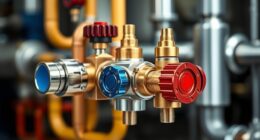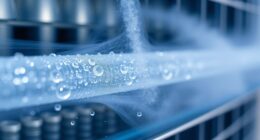Are you interested in learning how heat pumps work in colder climates? Look no further!
In this article, we’ll dive deep into the factors that affect electricity consumption in cold climates when it comes to heat pumps. We’ll break down heat pump efficiency ratings, optimize performance in chilly weather, and provide tips for reducing electricity usage.
Plus, we’ll compare heat pump energy efficiency across different cold climates.
Get ready to explore the ins and outs of heat pump electricity consumption in cold climates!

Key Takeaways
- Insulation and proper maintenance are crucial in reducing electricity consumption in cold climates.
- Heat pump efficiency ratings indicate energy consumption and performance.
- Optimizing heat pump performance in cold weather includes regular cleaning, checking refrigerant levels, and clearing snow and debris from the outdoor unit.
- Reducing electricity usage in cold climates can be achieved through proper insulation techniques, thermostat settings, and the use of energy-efficient appliances and lighting.
Factors Affecting Electricity Consumption in Cold Climates
We’ve identified several factors that impact electricity consumption in cold climates.
One of the key factors is the impact of insulation on heat pump electricity consumption. Adequate insulation in a building helps to reduce heat loss, which means the heat pump doesn’t have to work as hard to maintain a comfortable temperature. This can significantly reduce electricity consumption.
Another important factor is the importance of regular maintenance in maximizing heat pump efficiency. Regular maintenance, such as cleaning or replacing air filters, checking refrigerant levels, and ensuring proper airflow, can help the heat pump operate at its optimal efficiency. This can result in lower electricity usage and cost savings.
Understanding Heat Pump Efficiency Ratings
To better understand heat pump efficiency ratings, we should examine the factors that contribute to their overall performance. Two crucial factors to consider are heat pump maintenance and heat pump sizing. Proper maintenance ensures that the heat pump operates at its optimal efficiency, reducing energy consumption and prolonging its lifespan. Regularly cleaning or replacing air filters, checking refrigerant levels, and inspecting motors and coils are essential maintenance tasks. On the other hand, heat pump sizing is critical to ensure efficient operation. If a heat pump is too large for the space it is serving, it may short cycle, resulting in increased energy consumption. Conversely, if the heat pump is undersized, it may struggle to meet the heating or cooling demands, leading to reduced efficiency. By addressing these factors, homeowners can maximize the efficiency of their heat pumps and reduce energy consumption.
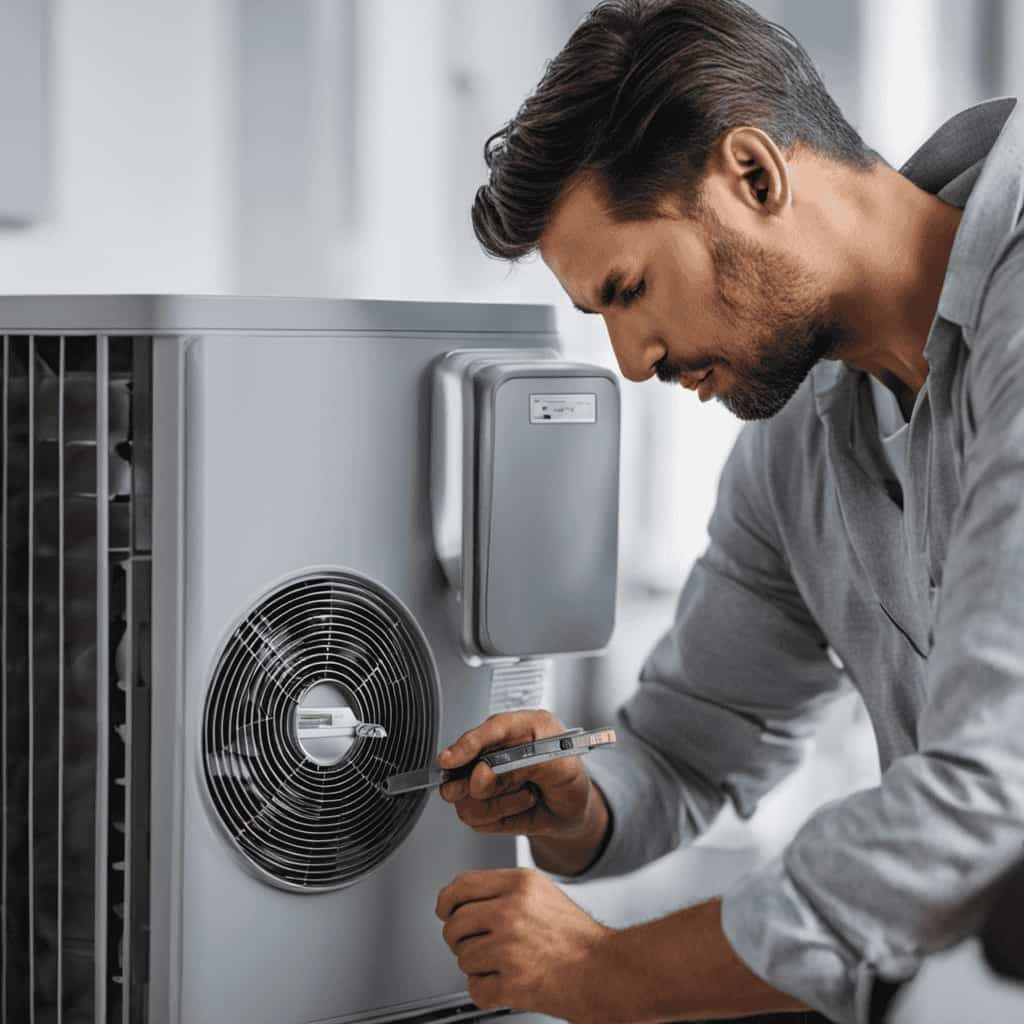
| Factors | Description |
|---|---|
| Heat Pump Maintenance | Regularly cleaning or replacing air filters, checking refrigerant levels, inspecting motors and coils |
| Heat Pump Sizing | Ensuring the heat pump is properly sized for the space it is serving to avoid short cycling or inadequate heating/cooling |
Optimizing Heat Pump Performance in Cold Weather
By properly insulating and sealing the home, as well as regularly maintaining the heat pump, we can ensure optimal performance and energy efficiency in cold weather. Here are four ways to optimize heat pump performance during the winter months:
-
Clean or replace air filters regularly: Clogged filters restrict airflow and reduce efficiency. By keeping them clean, we allow proper air circulation and maintain optimal performance.
-
Check refrigerant levels: Low refrigerant levels can cause the heat pump to work harder, leading to increased energy consumption. Regularly checking and topping up refrigerant levels ensures efficient operation.
-
Clear the outdoor unit: Snow, ice, and debris can obstruct the outdoor unit’s airflow, affecting its performance. Regularly clear any obstructions to maintain proper heat exchange.
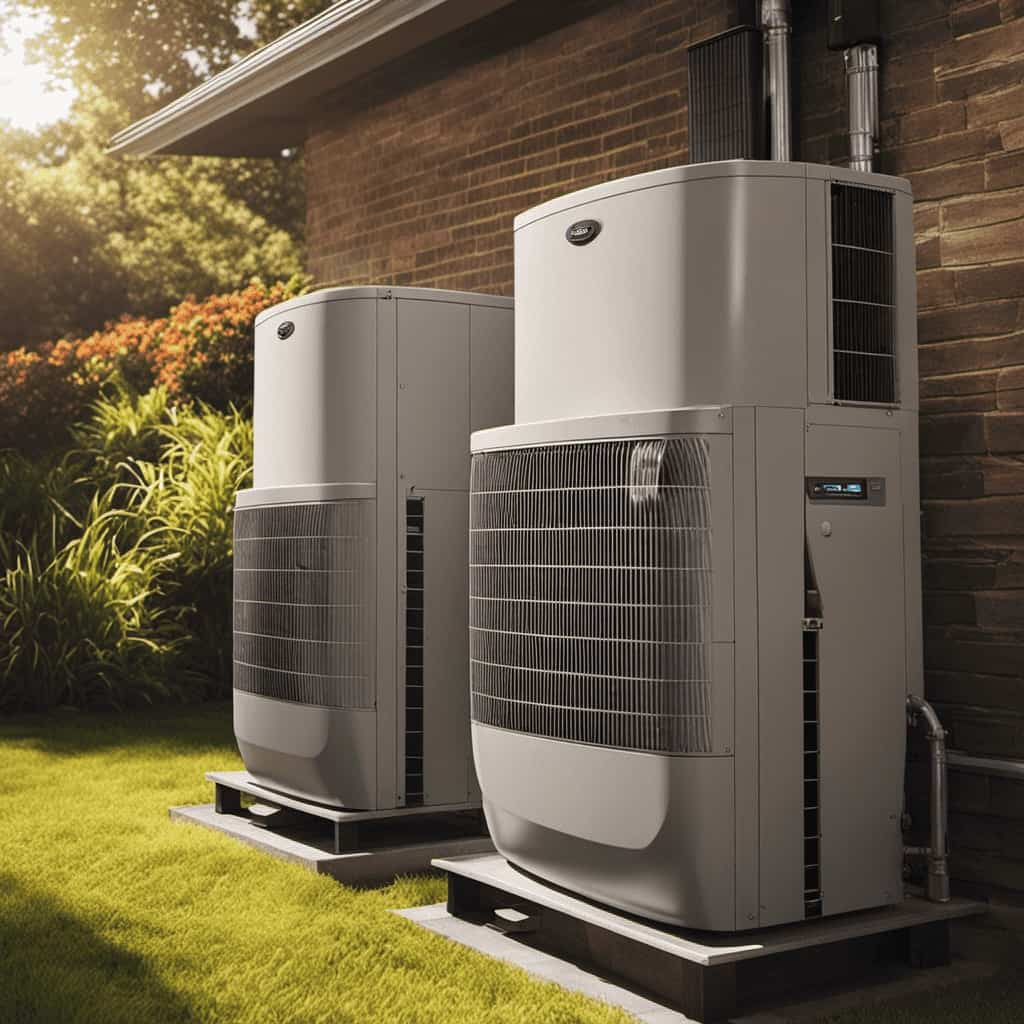
-
Schedule professional maintenance: Regular maintenance by a qualified technician can identify and address any issues before they become major problems. This ensures the system operates at its best and maximizes winter energy savings.
Tips for Reducing Electricity Usage in Cold Climates
Here are some effective ways we can reduce our electricity usage in cold climates.
One of the key factors in reducing energy consumption is proper insulation techniques for cold climate homes. Ensuring that your home is well insulated can significantly reduce the amount of heat loss, thus minimizing the need for excessive heating. This can be achieved by sealing any air leaks, adding insulation to walls, floors, and attics, and using insulated doors and windows.
Another important aspect is setting the thermostat to energy-saving settings in cold weather. Lowering the temperature by a few degrees when no one is at home or during nighttime can result in substantial energy savings. Additionally, using a programmable thermostat allows for better control and optimization of heating schedules.
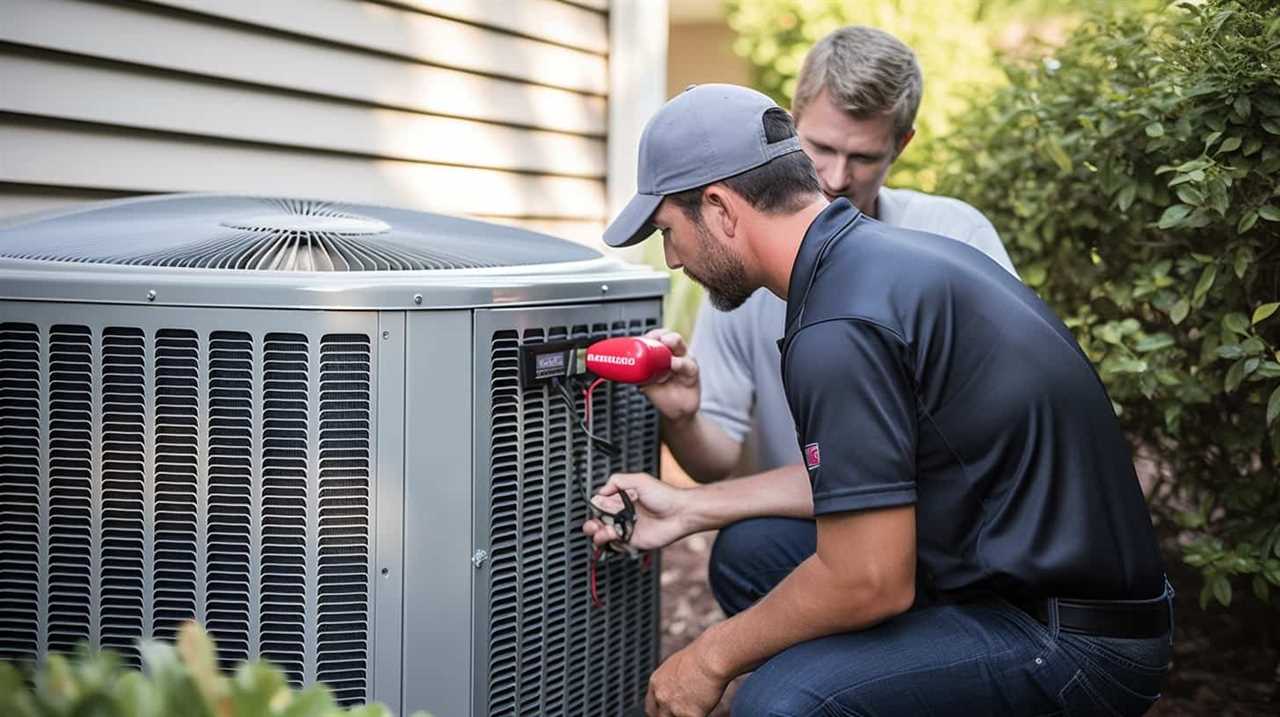
Comparing Heat Pump Energy Efficiency in Different Cold Climates
In colder climates, heat pump energy efficiency can vary, but it’s important to compare the different options available. When considering the energy efficiency of heat pumps in different cold climates, there are several factors to take into account:
-
Heat pump technology advancements: The advancements in heat pump technology have greatly improved their performance in cold climates. Newer models are designed to operate efficiently even in extremely low temperatures, ensuring optimal heating performance.
-
Cost effectiveness: Heat pumps can be a cost-effective heating solution in cold climates. They’re more energy-efficient compared to traditional heating systems, resulting in lower energy bills. Additionally, some regions offer incentives and rebates for installing energy-efficient heat pumps, further reducing the overall cost.
-
Climate-specific models: Manufacturers have developed heat pumps specifically designed for cold climates. These models are equipped with features like enhanced insulation, variable speed compressors, and defrost systems, which allow them to operate efficiently in sub-zero temperatures.

-
Proper sizing and installation: To ensure optimal energy efficiency, it’s crucial to properly size and install the heat pump. A professional HVAC technician can determine the right size and ensure that the system is installed correctly, maximizing its efficiency.
Frequently Asked Questions
Can a Heat Pump Effectively Heat a Home in Extremely Cold Climates?
Yes, a heat pump can effectively heat homes in extremely cold climates. However, it may have reduced efficiency and increased electricity consumption. This impact on the electricity grid should be considered when evaluating its suitability for cold climates.
Are There Any Additional Costs Associated With Using a Heat Pump in Cold Climates?
There are additional costs associated with using a heat pump in cold climates. These include increased energy consumption due to the need for more frequent defrost cycles and potentially higher electricity bills. However, the energy efficiency of heat pumps can offset some of these costs.
Can a Heat Pump Be Used as the Sole Heating Source in a Cold Climate?
Yes, a heat pump can be used as the sole heating source in a cold climate. However, its efficiency may decrease in extreme cold conditions. Alternative heating options should be considered to ensure optimal comfort and energy savings.
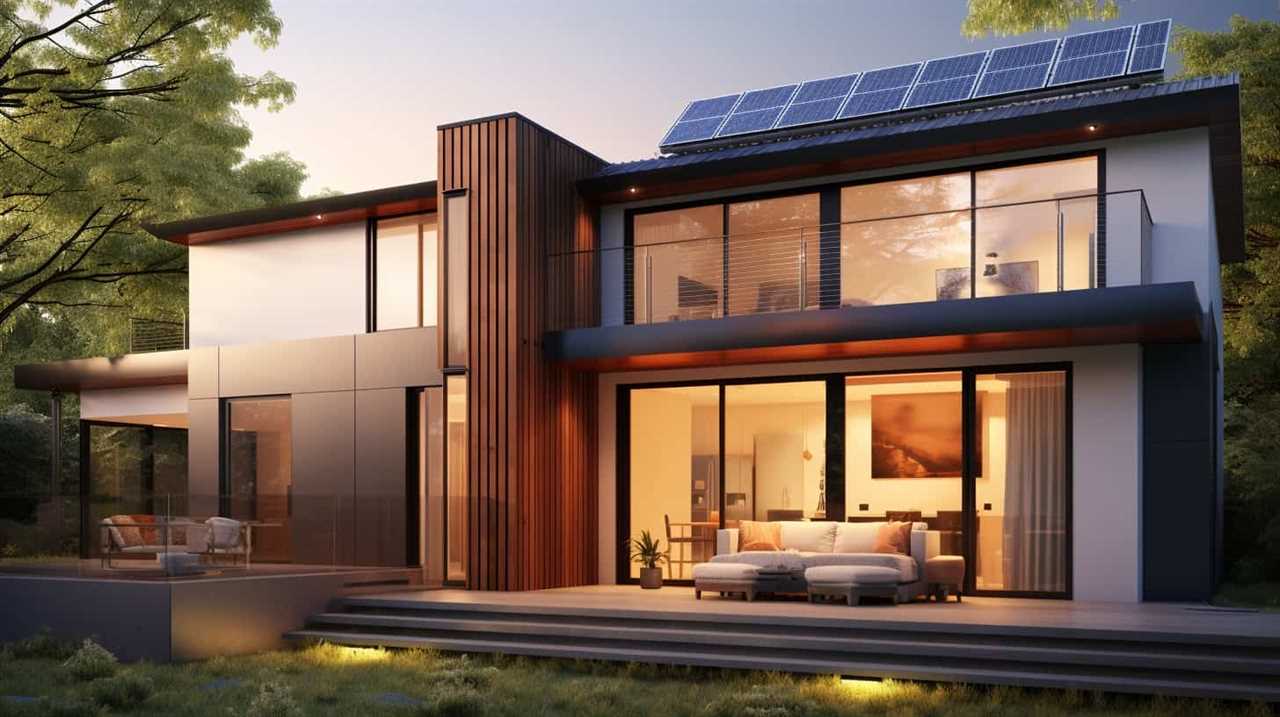
How Does the Electricity Consumption of a Heat Pump Compare to Other Heating Options in Cold Climates?
When comparing electricity consumption in cold climates, it is important to assess the energy efficiency of heat pumps against other heating options. By conducting a detailed analysis, we can determine the most cost-effective and environmentally friendly solution.
Are There Any Government Incentives or Rebates Available for Installing a Heat Pump in a Cold Climate?
Yes, there are government incentives and rebates available for installing a heat pump in a cold climate. These programs aim to encourage the adoption of energy-efficient heating options like heat pumps.
Conclusion
In conclusion, understanding the factors affecting electricity consumption in cold climates and optimizing heat pump performance can significantly reduce electricity usage.
By considering heat pump efficiency ratings, implementing tips for reducing electricity usage, and comparing energy efficiency in different cold climates, homeowners can make informed decisions to minimize their energy consumption.
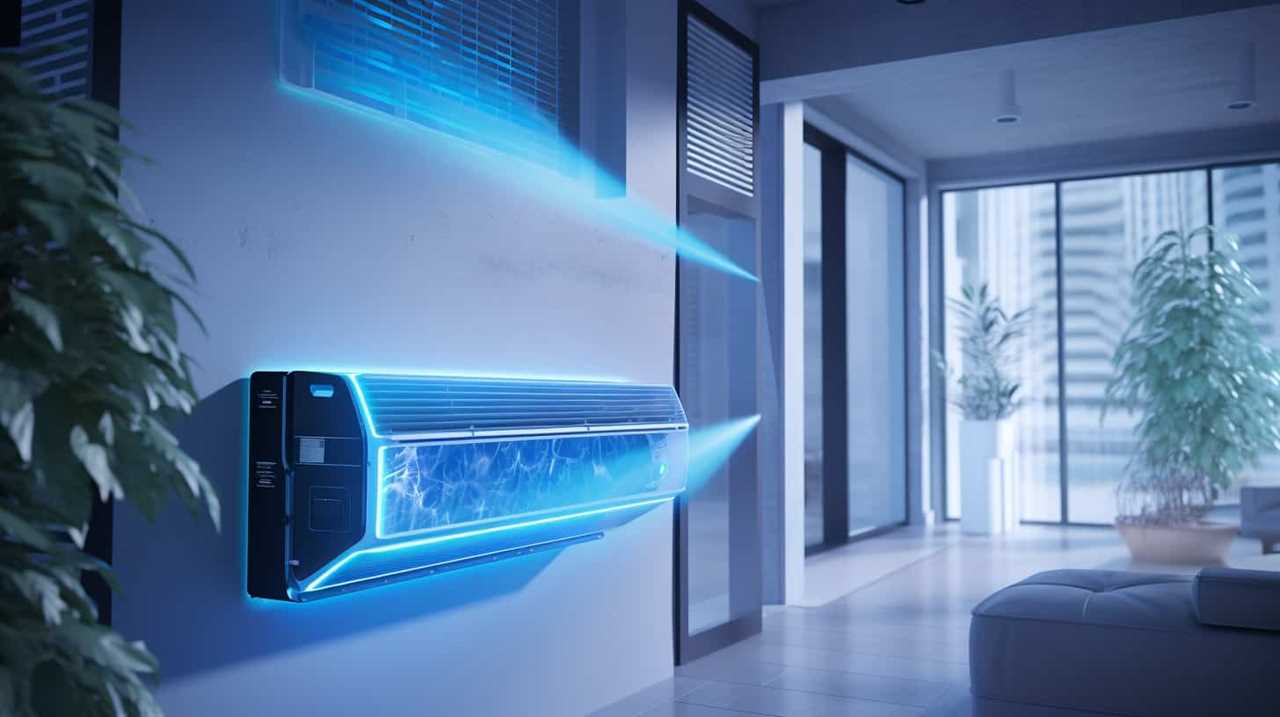
With this knowledge, they can enjoy the benefits of heat pumps while minimizing their impact on the environment and their monthly energy bills.






